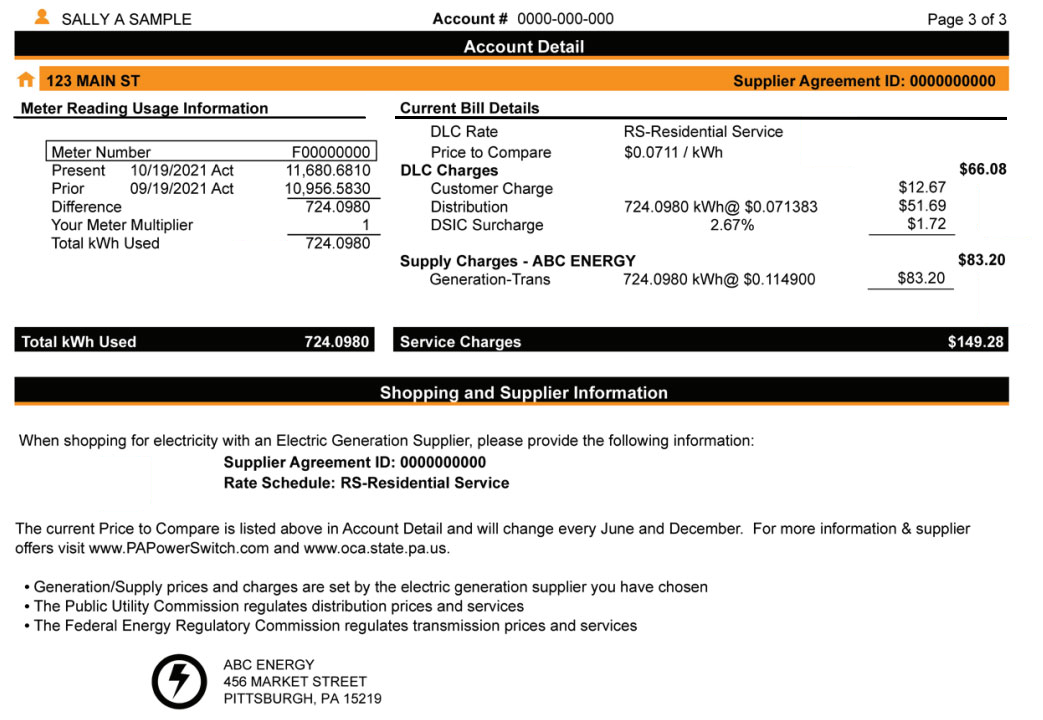Understanding your Energy Bill
Don’t stay in the dark about your energy bills. Discover helpful tips and essential terms to gain a clearer understanding of your bill!
What to look for!

- Always check out your usage information.
- The current “Price to Compare” rate should be visible usually around the top of the billing page depending on your Utility.
- Charges from your utility to service and deliver electricity or gas to your home.
- Charges from Major Energy, or the supplier of your choice would appear under the supply/ generation charges. This is your cost for consumption during the given billing period.
Energy Key Terms:
Deregulated energy empowers consumers, providing the power to choose. In regulated energy markets, your local utility company sells and delivers energy to your home. This usually leads to a monopoly in which the utility is the only provider for a zip code. Deregulation has opened many markets for independent suppliers to compete in and ultimately offer consumers greater plan options.
Supply charges cover the actual energy used to power your home. Delivery charges are charged separately and cover the infrastructure and operations to deliver energy from source to your residence.
Each of these terms is used by natural gas suppliers to calculate your gas usage and, therefore, determine how much to bill you. Conversion may be required, as some markets have differing default units.
- Therms to CCF: therms x 1.037= CCF
- Therms to MCF: therms x 10.37 = MCF
- CCF to Therms: CCF/1.037 = Therms
- CCF to MCF: CCF x 10 = MCF
- MCF to Therms: MCF/10.37 = Therms
- MCF to CCF: MCF/10 = CCF
Accelerated Switch: Typically takes 3 – 5 business days to become effective.
Delayed Switch: Typically becomes effective by the next available meter read date which can take 2-3 billing cycles.
Feel free to reach out to a customer care agent (1-888-625-6760) if your switch is taking longer than expected.
The specific period, usually a month, during which energy consumption is measured for billing purposes. Most billing cycles range between 28 to 35 days in length.